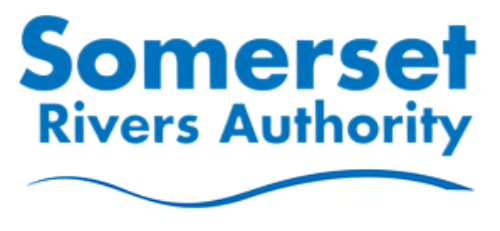In January 2023, Defra announced a decision to implement Schedule 3 of the Flood and Water Management Act 2010 in England. This will introduce a new framework and national standards for the approval and adoption of SuDS in England, and will make Unitary and County Councils SuDS Approving Bodies. The UK Government is currently considering how Schedule 3 will be implemented.
Lead Local Flood Authority

As Lead Local Flood Authority (LLFA), Somerset Council is statutory consultee to the planning system on surface water drainage, in major planning applications (defined in the Town and Country Planning Order, 2015).
The LLFA is responsible for managing flooding from surface water, ordinary watercourses and groundwater, known as 'local sources of flood risk'. It is also the Land Drainage Authority for ordinary watercourses outside the Internal Drainage Board (IDB).
As statutory consultees, the LLFA will comment predominantly upon the water quantity and water quality aspects of any major development. The LLFA will not normally provide comment on ecology, landscape, amenity, visual impact, heritage or other planning matters except:
- To highlight to the Local Planning Authority (LPA) or applicant where proposals do not meet national or local standards.
- To highlight to the LPA or applicant where opportunities exist to incorporate, or enhance the value or performance of, SuDS.
- Where other planning matters might impact on access to, or the performance or integrity of, a SuDS feature (e.g. playground equipment above a geocellular soakaway).
The LLFA expects the LPA and applicant to seek advice at the masterplanning stage from the relevant consultees and recognise the role SuDS can play in delivering multiple benefits. The LLFA will always seek to work with others, and signpost to any relevant local policies, strategies and guidance to achieve joint aims and objectives. The LPA should be mindful that masterplanning across several application sites in proximity will likely maximise opportunities for strategic SuDS. It also provides opportunities for implementing flood risk infrastructure and natural water management features, as well as minimising the effects of cumulative development.
When to consult:
On surface water drainage and local sources of flood risk for all major development planning applications.
How to consult:
The LLFA does not have a formal pre-application process. However, it welcomes early discussions with developers around surface water drainage and flood risk relating to major developments. Please contact LLFA@somerset.gov.uk.
For information on consents to work on an ordinary watercourse, see Permits and consents.
Internal Drainage Boards

The Somerset Drainage Boards Consortium is a contributing authority in the planning process. The board comments on drainage, flood risk and water level management within the following Internal Drainage Board (IDB) areas:
- Axe Brue Drainage Board
- North Somerset Levels Drainage Board
- Parrett Drainage Board
Find out more about Drainage Boards and the planning process.
Check the map of the IDB boundaries to find out if your site is in an IDB area.
When to consult:
For planning applications where a development site is located in, or drains into, the Board's boundaries.
How to consult:
Contact the Somerset Drainage Boards Consortium.
For information on consents to work on an existing watercourse, see Permits and consents.
Wessex Water

Since 1st April 2020, Wessex Water has been able to adopt SuDS features as part of the surface water sewer network, under the Sewerage Sector Guidance.
When to consult:
Early consultation with Wessex Water and the Local Planning Authority will be required, before developing the site layout or masterplan (plan showing the general layout of key elements on the site).
To ensure a viable drainage strategy, Wessex Water must be contacted before submitting a planning application. This will allow agreement of any connections and discharge rates into the public sewer network, as well as adoptable SuDS design standards.
Find out more about the requirements for adoption by Wessex Water.
How to consult:
Complete a planning liaison application form, and submit it to planning.liaison@wessexwater.co.uk.
Local Planning Authority
The Local Planning Authority (LPA) sits with the District Council or Unitary Authority and is responsible for granting or refusing planning permission for building and development. It also prepares a Local Plan, which sets out planning policies for the administrative area.

Before Somerset Council became an unitary authority in April 2023, there were four District LPAs in Somerset:
- Mendip District Council
- Sedgemoor District Council
- Somerset West and Taunton Council
- South Somerset District Council

Somerset Council is now the LPA for Somerset. Exmoor National Park Authority remains the LPA within the National Park boundary. To apply for planning permission, please follow the link below to the appropriate authority and direct any further queries to the LPA.
When to consult:
On planning applications for all types of development.
How to consult:
Highways Authority

The Highways Authority sits within Somerset Council and has the lead responsibility for providing and managing highway drainage and roadside ditches under the Highways Act 1980.
Highways England manages surface water and drainage for water on and from major (trunk) roads in Somerset, such as motorways and 'A' roads. Follow this link for a map of the network managed by Highways England.
The Highways Authority and Highways Agency are statutory consultees. Where a development proposal has an impact on the highway network, they will be consulted by the Local Planning Authority. Early or pre-application advice can also be sought with the Highways authority.
When to consult:
- On all planning applications.
- Where SuDS are proposed for adoption by the Highways Authority. Find out more about the requirements for adoption by the Highways Authority.
How to consult:
Visit Consulting the Highway Authority on planning applications
Environment Agency

The Environment Agency has strategic overview for flood risk and coastal erosion within England. The Agency is a statutory consultee on a range of planning proposals, including sites within Flood Zone 2 or 3, those with critical drainage issues, and those within 20m of the banks of a Main River.
When to consult:
For planning applications which meet the following criteria:
- In Flood Zones 2 or 3.
- In Flood Zone 1, where there are critical drainage problems.
- Within 20m of a Main River bank.
- Major development which does not use existing sewage treatment infrastructure.
- Mining, fuel storage or involves handling hazardous substance.
Please read the Environment Agency's Standing Advice on flood risk before you consult them.
How to consult:
Visit the Environment Agency pre-application advice service.
For information on consents to work on a Main River, see Permits and consents.

